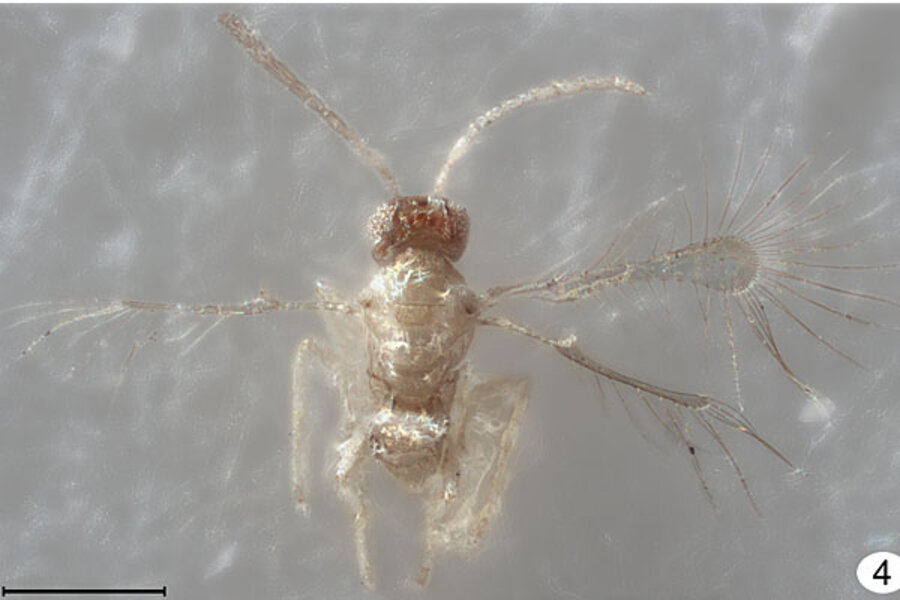Scientists discover ridiculously small insect
Loading...
A pair of scientists have discovered a new species of tiny insect, a miniscule wasp that lives in the forests of Costa Rica.
Named Tinkerbella nana, after the Peter Pan character, the species measures no more than 250 micrometers in length. By comparison, the average human hair is about 100 micrometers wide.
According to a paper published Thursday in the Journal of Hymenoptera Research, the insects were collected by John S. Noyes, an entomologist at London's Natural History Museum, who swept a mesh net through vegetation at Costa Rica's La Selva Biological Station. Samples from the net were then examined under a microscope.
The species is a fairyfly, a type of wasp found worldwide. Most fairyflies are parasites that lives on other insects' eggs, but the researchers know almost nothing about Tinkerbella's behavior.
As small as Tinkerbella is, its not the smallest flying insect. That distinction goes to Kikiki huna, a fairlyfly native to the Hawaiian islands that measures just 150 micrometers. The Canadian Forestry Service's John T. Huber, the primary author on the Tinkerbella paper, was also the principal discoverer, in 2000, of Kikiki.
But even Kikiki is not the smallest insect. The males of a wingless, eyeless species of fairyfly called Dicopomorpha echmepterygis, have measured no more than 139 micrometers long.
How small can a bug get? Huber and Noyes's paper examines the theoretical minimum for insect sizes. Smaller animals tend to have a higher strength-to-weight ratio than larger ones, but once you get below a certain size, the muscles in an appendage get so small that they cannot overcome the appendage's own inertia. The authors suggest that winged insects capable of flapping their wings cannot be less than 150 micrometers long. For flightless insects, the smallest you can get while still being able to lift your body off the ground is, they suggest, about 125 micrometers.
In their introduction Huber and Noyes' quote an unlikely source, Pliny the Elder's "Natural History":
Almost 2000 years ago, Pliny the Elder (ca. 23–79 A.D.) stated “Rerum natura nusquam magis quam in minimis tota est” loosely translated as “nature is nowhere as great as in its smallest.” In the absence of any means of magnification he could not possibly have seen the intricate structure and beauty of fairyflies or other minute organisms. But his statement certainly holds true.








